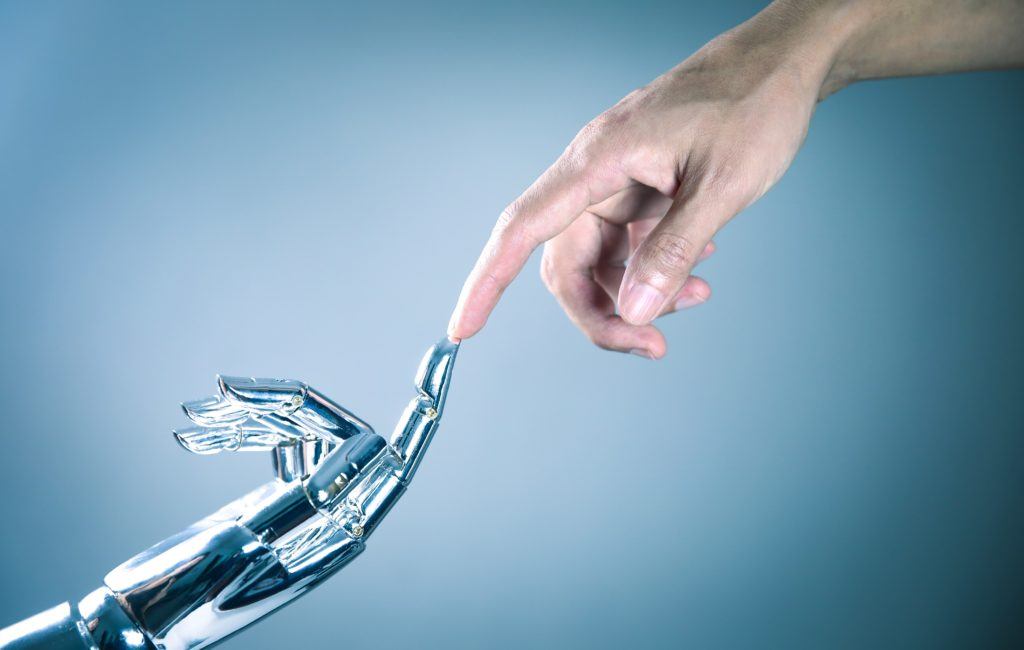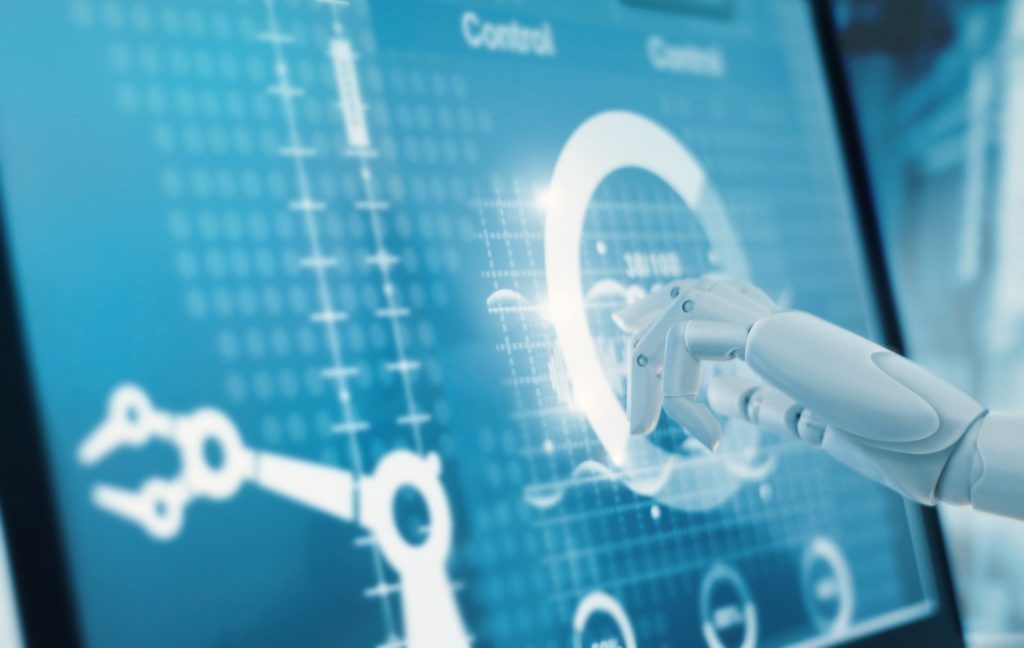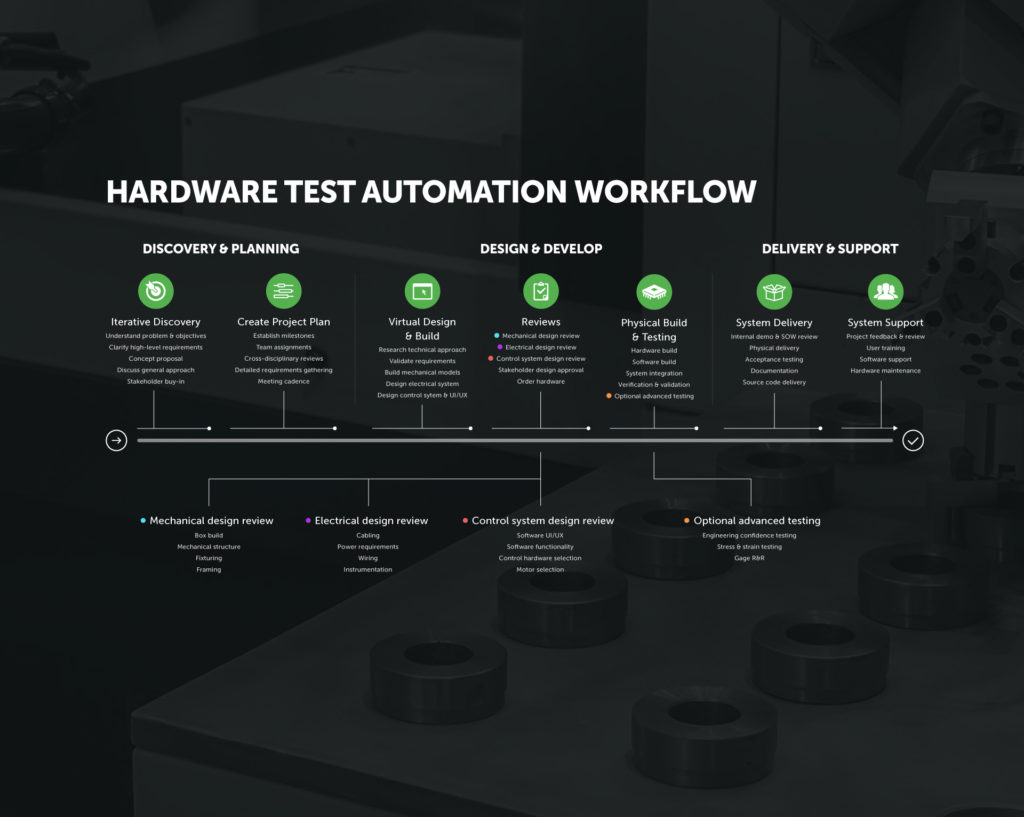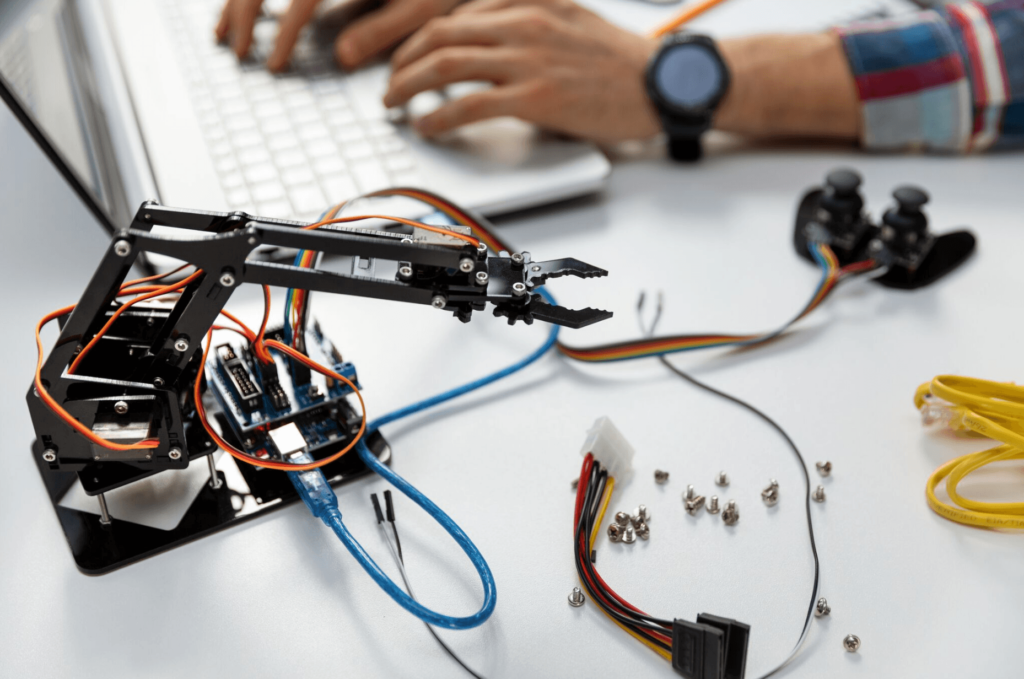Article
Cobots: Robot Factors for Collaborative Processes

“Cobots” is the term used to describe a new wave of collaborative robots. There are many reasons why it’s the right time for the rise of cobots:
Relevant technological advancements
Faster computer processing speeds allow for heightened robotic “thinking skills” and more responsive movement. These skills are critical developments that allow robots and humans to work together more safely.
Better standards for human safety
Regulatory bodies like the RIA (Robotic Industries Association) are helpful in putting together rules for how robots should operate in the workplace. From outlining safety requirements to determining the role OSHA should play in oversight, new regulatory bodies help create a safer environment for collaborative robotics. To help companies specializing in robotics and automation to genuinely understand how they can incorporate safety in working with machines, RIA has developed numerous resources that include safety documentation, training seminars, and safety training.

More comfortable to work with
As we develop more anthropomorphic robots, humans will have an easier time working with them. Robots that are more humanoid may be less frustrating, impersonal, intimidating, or distracting to work with. A recent study by researchers at Toyohashi University of Technology and Kyoto University found that humans showed empathy towards humanoid robots in perceived pain and had only slightly weaker compassion for the robots than what they felt towards humans in distress.
Affordability
With the rise of re-programmable robots, a team can employ a single robot to complete numerous tasks during the workday instead of having to buy multiple robots to accomplish one goal each. And as robotic technology advances, the price of robots is going down; according to McKinsey and Company, over the past 30 years, the average robot price has decreased by 50 percent. Also, according to an infographic by Precision Automated Technology, Inc., companies who increase their automation usage could save almost $500,000 a year when compared to traditional labor costs.
Critical factors for effectively communicating with robots
With more robots working in tandem with humans, the question is inevitable: what are the best practices for working with robots? This discussion is really twofold. First, as a human, how do you successfully communicate with a robot? How do you make sure your message is understood? And second, how do you design robots that communicate and interact well with humans?
Understand the nuances of each cobot
It is essential for human staff to understand the abilities and limitations of each robot they work with, just as they might understand their co-workers’ abilities differently. For example, certain communications will be possible with a humanoid robot that has eye sensors to make sense of human hand movements, while teleoperated and industrial robots might need computer programming languages or specific keywords to understand commands.
Holly Yanco, a professor at the University of Massachusetts, suggests early measures for facilitating human/robot communication could be as simple as equipping robots with universal icons. “I may not need to know everything that the robot is doing, but I need to know that this space is safe for me to walk into,” explains Professor Yanco.
Know the robot’s “World Model”
According to a study by Harmon and Gage, each robot has a unique “world model,” meaning their view and understanding of the world is different based on their technical specs, programming, and designated task. The robot may not have sensors that allow it to understand a specific command or to accomplish a specific task. Human staff should understand this concept going in.

Tailor the content of the message
Specific robots have content layers that dictate how much information they can act upon per message and the type of dialogue needed to reach them. If a message is task-dependent, then this message must directly reference the task discussed and must be careful not to reference other functions.
Try additional physical resources
For staff members who are not incredibly tech-savvy and do not understand computer programming, physical aids may be helpful in facilitating communication. Karvonen and Aaltonen studied the possibility of using wristbands for human staff working with cobots. The bands vibrated to alert humans to an issue or question involving the robot. They also discussed the use of augmented reality to show a robot’s communication intention without it interfering with the actual physical environment. There are numerous ways scientists and engineers can help humans and robots speak to one another, whether through gestures, voice, programming, or — in the near future — brainwaves.









